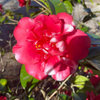Chabaud Carnation
shic_2006
18 years ago
Sponsored
Central Ohio's Trusted Home Remodeler Specializing in Kitchens & Baths
I live in central NY. We have cold/cloudy winters. I sowed a bag of Chabaud Carnation seeds into tree pots last Friday. I see some green seedlings this morning. The temperature is about 50. I covered the pots with plastic films because I cannot water the pot. That would mess up the 0.5 inch covering soil and the small seeds. I dont know if I should remove the film now. I donÂt want the small seedlings to dry up. I never planted them indoors before. I know they love full sun. I donÂt know if it is feasible to keep them as indoor potted plants. I also would like to know why people only use them for the first year. Do they produce few flowers after the first year? How to make their flowers larger?


bellegallica
ghoghunter
Related Discussions
Lots of Perrenial Seeds to zone 6 & a few annuals for SASBE
Q
Wanted: Chabaud Carnations
Q
HAVE: Seeds-40 packs for 1 plant
Q
Chabaud--days to bloom
Q
shic_2006Original Author
chris_in_wv (z6/7)
shic_2006Original Author
chris_in_wv (z6/7)
shic_2006Original Author